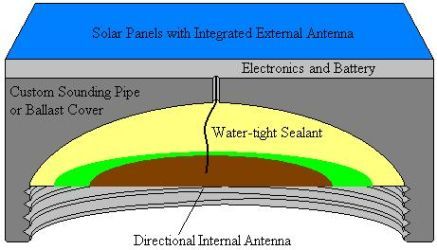Historical

Invocon concluded a Phase I Small Business Innovation Research (SBIR) contract with the Department of Transportation to develop an ESBAWM system. The purpose of ESBAWM is to monitor and log ballast exchanges in oceanic cargo vessels.
These type of ships are required to perform a deep-ocean ballast exchange between ports to reduce the risk of transplanting foreign plant or animal species. The Coast Guard would like to use ESBAWM to independently monitor each ship’s ballasts, noting whether an exchange took place and the location of the exchange.
The System includes multiple Ballast Monitoring Units (BMUs) per ship and one Ship Data Collection and Location Unit per ship. The BMUs (pictured) are mounted atop ballast sounding pipes and periodically monitor the ballast levels using a pseudo time-domain reflectometry measurement. These units then pass ballast activity through the wireless network created by the BMUs to the SDCLU. This unit logs the ballast activity and respective GPS location information. When the ship approaches shore the SDCLU contacts a receiver near the port and downloads the ballast-exchange information. This data is then passed through the internet and can alert port authorities to potentially contaminated ships before they enter port.
